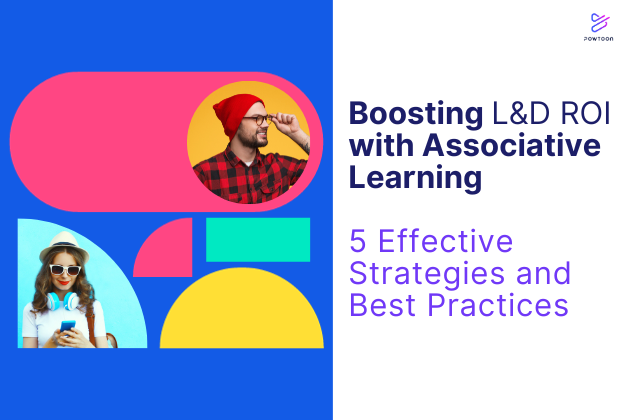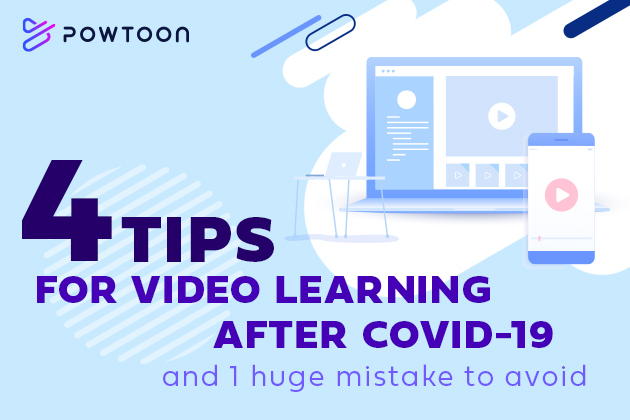
Boosting L&D ROI with Associative Learning: 5 Effective Strategies and Best Practices
Your learning and development team is critical to your company’s success. Research shows that employees are more likely to be engaged when they can access reliable and valuable training and development opportunities. Employee engagement and retention will likely improve if your L&D team offers these opportunities.
However, to maximize the return on investment of your L&D efforts, your team needs to familiarize themselves with the most effective learning strategies and methods.
One such learning method they could experiment with is associative learning. Keep reading to learn more about associative learning and how it can improve your company’s learning and development programs.
Understanding Associative Learning
Associative learning is essentially a biological process that occurs in the brain. When an organism acquires a certain piece of knowledge, it might associate it with a particular memory or idea depending on when and where it acquires it.
A classic example is Pavlovian conditioning. Ivan Pavlov studied this by ringing a bell every time he prepared to feed the dogs he was studying. Eventually, he would ring the bell but wouldn’t provide food.
The dogs salivated anyway. By this point, they had unconsciously learned to associate the sound of the ringing bell with the anticipation of a meal.
The brain forges connections between various experiences and ideas in its neural pathways when two stimuli are presented together in a memorable and effective way. This is the essence of associative learning. Your learning and development team may leverage its power to achieve impressive employee training results.
The Link Between Associative Learning and L&D ROI
Research from Harvard has recently shown that active learning strategies (such as associative learning) can boost the retention of information among students. Thus, by designing learning content and training programs around associative learning and associative memory, your learning and development team can increase the odds that your employees will retain what they learn during training sessions via online learning courses, etc.
The implications for your ROI are significant. If employees retain what they learn via training programs, they will simply be more skilled, resulting in a major competitive edge for your company.
Effective Strategies for Implementing Associative Learning in L&D
There are many ways your L&D team can potentially develop training and development programs that effectively leverage the power of associative learning. The following are several key examples to consider:
Use of Metaphors and Analogies
Metaphors and analogies are ideal for associative learning because they may help employees tie new knowledge to concepts with which they are already familiar. In general, metaphors and analogies can also allow learning and development specialists to simplify what may otherwise be complex ideas.
For example, perhaps you’re teaching your employees how to identify potential phishing attacks. You could do so by using a metaphor of a fish spotting what appears to be an attractive meal, not realizing it is bait. In this metaphor, the employee is the fish, the phisher is the fisher, and the email they send is the bait.
This type of metaphor-based learning may also be enhanced through animated video. Research shows that animated video content can help educators more effectively convey information and boost retention when a topic is somewhat complicated.
Visual Aids and Mind Mapping
Associative learning is all about forging mental connections between ideas. Visual aids can help in this capacity by illustrating these connections.
Mind mapping in particular, may prove effective at visually strengthening the power of an associative learning-based training program. With mind mapping, workers visually brainstorm ideas by writing or drawing representations of them and seeking connections between said ideas.
Interactive Learning Activities
Again, as Harvard research suggests, one of the reasons associative learning may boost retention is that it is often active in nature. When a person actively engages with their learning experience, it’s natural that they may be more likely to retain what they’ve learned than if they simply passively consume a piece of learning and development content.
For instance, you could teach employees to identify hazardous conditions in the workplace by having them spend time at various work sites, some of which may contain hidden hazards. Employees will develop a mental association between certain workplace conditions and danger by directly learning to spot these hazards.
Regular Assessments and Quizzes for Reinforcement
Researchers who study associative learning tend to find that it doesn’t happen immediately. To return to a previous example, Pavlov didn’t train the dogs to salivate immediately at the sound of a bell. He had to solidify the mental association between the sound of the bell and the presentation of food through consistent training.
Humans are no different from dogs in this respect. Regular testing and assessment should be part of the programs to ensure your employees fully benefit from associative learning programs.
Group or Peer Work
Group or peer work boosts the effectiveness of associative learning programs by adding to their interactive nature. Once more, if employees actively engage with learning content, they may retain it better. On top of that, when employees work together during training sessions, they can assist one another, with employees explaining key concepts to one another when certain group members need extra clarification.
Increase Employee Knowledge Retention With Engaging Learning Experiences
Experimenting with associative learning-based programs can help your learning and development team achieve goals that optimize their ROI. However, it’s worth keeping in mind that no learning program can be truly effective without strong content.
Powtoon can help. Designed for amateurs and professionals, Powtoon allows users to easily and affordably create dynamic videos and slideshows, even if they lack video production experience. The videos you create with Powtoon can offer your employees the type of training content that drives retention when combined with associative learning strategies. Get started by signing up today to learn more.
Latest posts by Hanna Abitbul (see all)
- The Best 13+ AI Video Editors of the Year - February 22, 2024
- 10+ Best AI Video Generators of 2024 [Complete Review] - February 22, 2024
- Boosting L&D ROI with Associative Learning: 5 Effective Strategies and Best Practices - November 14, 2023
- How AI-Infused Personalized Learning Content Can Enhance Employee Knowledge Retention - November 12, 2023







